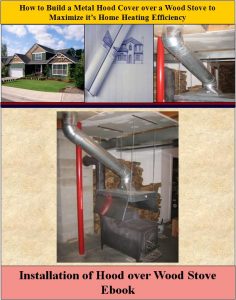Wood Stove Heating Offers a Number of Advantages
By Mark J. Donovan
|
|
Heating with wood stoves has been done for thousands of years. Wood is plentiful around much of the world and it is typically less expensive than burning other types of fuel such as propane, natural gas, oil, coal or electricity. Harvesting wood is also easier to do.
No one can just go out on their back 40 and simply drill a natural gas well, or mine coal, or even create their own electrical generation plant. However, a man with an axe, and small forest in his backyard, can heat his home, with the help of a wood stove for decades. |
Though the primary heat for most homes today is fueled by oil, gas or electricity, heating with wood stoves, for at least supplemental reasons, is still common. In the northeast United States, for example, where trees are prolific you can’t drive down a country road in the winter without finding at least a couple of homes burning wood stoves.
And we’re only 40 minutes from downtown Boston, MA. In these situations a wood stove can make the difference in making your home livable, and saving your home from burst water pipes. In addition, it can serve as a safe cooking source.
The drier the wood the more heat that will be produced by the wood, and the lower the risk of chimney fires.
For information on Restoring Baseboard Heating Element Covers, see the Restoring Baseboard Heating Element Covers eBook from HomeAdditionPlus.com. The Restoring Baseboard Heating Element Covers Ebook provides easy to understand, step-by-step instructions, on how to restore Baseboard Heating Element Covers so that they look new again. Pictures are included for every key step in the process.
For information on how to maximize a wood stove’s heating efficiency, see HomeAdditionPlus.com’s Installation of Hood over Wood Stove eBook.
For information on how to clean a wood stove pipe, see HomeAdditionPlus.com’s How to Clean a Wood Stove Pipe eBook.
Related Information
Additional Heating and Cooling Resources from Amazon.com
 |
 |
Free Heating and Cooling Price Quotes with No Obligation!
Fill out our 3-5 minute quick and easy form, and receive a free price quote on heating & cooling from one of our pre-screened and licensed HVAC contractors. This process is free and there is no obligation to continue once you receive your heating & cooling price estimate.


